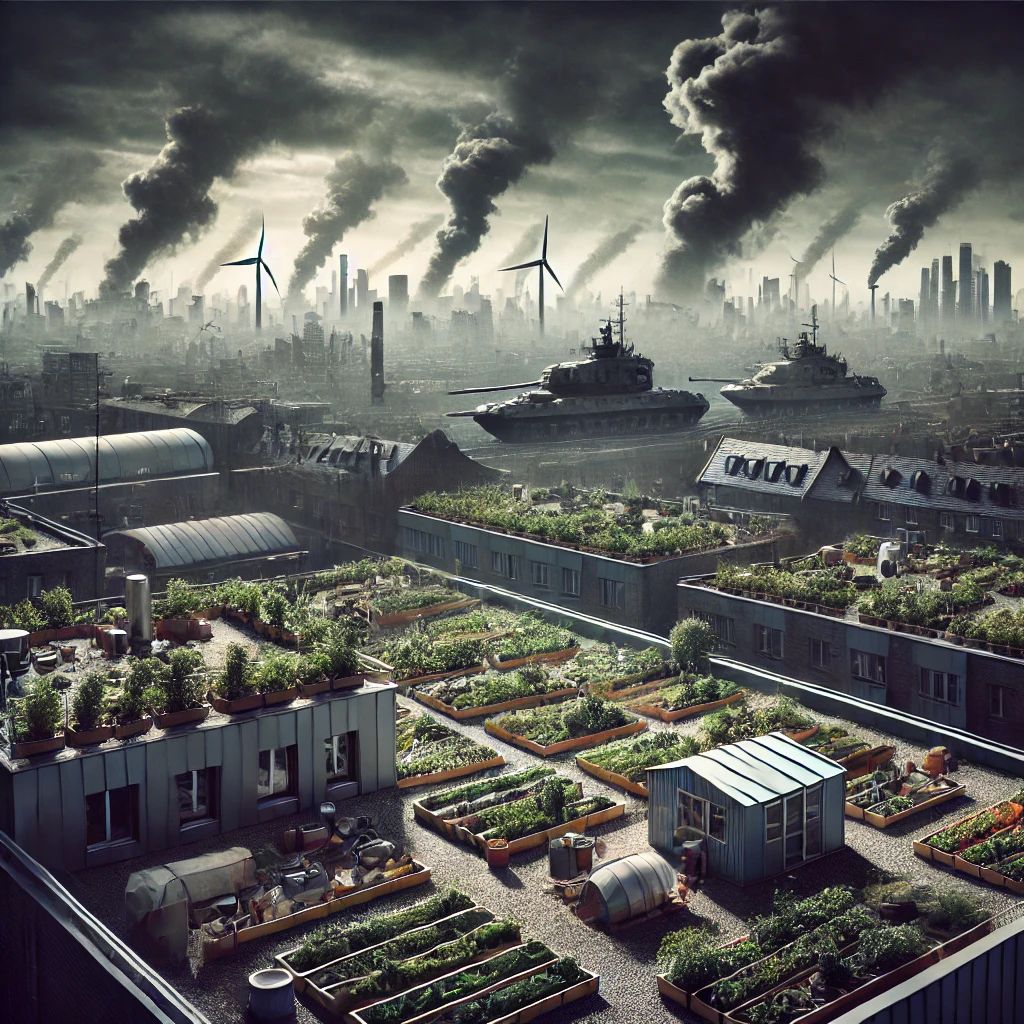In a world disrupted by global conflict, cities can no longer rely on the seamless flow of goods across borders. If World War 3 were to erupt, it would inevitably fracture supply chains, leaving communities scrambling to secure essentials like food, medicine, and energy. The cities that thrive in such a scenario will be the ones that pivot swiftly from global dependencies to local solutions.
Supply chains are the veins through which the lifeblood of modern economies flows. They deliver everything from the groceries on our shelves to the medical supplies that save lives. Yet, these intricate systems are also alarmingly fragile. Even before the specter of global war, disruptions caused by natural disasters, pandemics, and geopolitical tensions have revealed just how easily the global logistics machine can grind to a halt. In the event of a large-scale conflict, cities will be forced to contend with these vulnerabilities on an unprecedented scale.
The key to survival lies in localizing production. Cities must become more self-reliant, reducing their dependence on external sources for critical goods. Local manufacturing is not just an economic strategy; it is a resilience strategy. By producing essentials closer to home, cities can insulate themselves from international disruptions. But achieving this requires thoughtful planning, investment, and collaboration.
Food is among the most immediate concerns. Supply chain breakdowns can leave grocery stores barren within days, and cities without local food sources are especially vulnerable. Urban agriculture is a powerful tool to counteract this risk. By repurposing vacant lots, rooftops, and underutilized spaces for farming, cities can create micro-networks of food production. Community-supported agriculture programs and partnerships with local farmers can further enhance food security. While urban farming cannot replace large-scale agricultural systems, it can provide critical buffers during times of crisis.
Medical supplies and pharmaceuticals are another area where localization is crucial. Many cities rely on imports for basic medical equipment and drugs, a dependency that becomes precarious during global upheaval. Encouraging the establishment of small-scale manufacturing facilities for medical supplies and fostering partnerships with biotech firms can ensure a steady supply of these vital resources. In the long term, diversifying the medical supply chain to include more regional and local providers will create a stronger safety net.
Beyond food and medicine, cities must also reconsider how they source and produce energy. Renewable energy projects such as solar farms, wind turbines, and bioenergy facilities can reduce reliance on fossil fuels, which are often subject to volatile global markets. Investing in energy storage and microgrid technology will further enhance resilience by ensuring a steady supply even when the main grid is compromised. These efforts not only prepare cities for crises but also position them as leaders in sustainable development.
Cities need robust partnerships to support local manufacturing and energy production. Public-private collaborations can bridge the gap between municipal goals and the expertise and resources of local businesses. Economic incentives, streamlined regulations, and accessible financing can encourage entrepreneurs to establish manufacturing hubs within city limits. Meanwhile, workforce training programs can prepare residents for jobs in industries critical to local resilience.
Technology will play a pivotal role in reinventing supply chains. Advanced manufacturing techniques such as 3D printing can rapidly produce essential goods, bypassing traditional supply chain bottlenecks. Digital platforms that connect local producers with consumers can streamline the distribution of goods and reduce waste. By embracing these innovations, cities can create supply chains that are not only localized but also more efficient and adaptable.
Reimagining supply chains is not without its challenges. Local manufacturing and production require significant investment, and the transition will take time. Cities must balance short-term measures with long-term strategies, ensuring that immediate needs do not overshadow the groundwork for sustainable resilience. Moreover, the success of these efforts depends on strong community buy-in and collaboration. Leaders must engage residents and businesses, highlighting local production’s benefits for economic stability and community well-being.
The shift from global to local is not just a response to potential crises but an opportunity to build stronger, more self-reliant communities. By localizing supply chains and fostering innovation in manufacturing, cities can ensure they are prepared for whatever challenges lie ahead. In an uncertain world, self-sufficiency is the ultimate safeguard.
Tomorrow’s article will focus on the financial and social dimensions of resilience. We will explore how cities can support businesses and communities under stress, ensuring that no one is left behind in the push for stability. Stay tuned for actionable strategies to strengthen the social and economic fabric of your city.



Comments are closed